▼ IBBI registers NeSL as India's first Information utility [09-28-17]
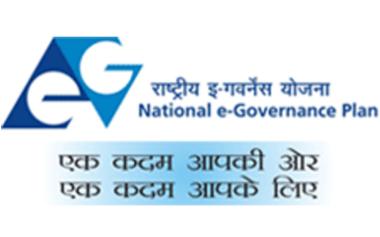 The Insolvency and Bankruptcy Board of India (IBBI) registered National E-Governance Services Limited (NeSL) as an Information Utility (IU) under the IBBI (Information Utilities) Regulations, 2017.
This registration is valid for five years from the date of registration.
IU stores financial information that helps to establish defaults as well as verify claims expeditiously and thereby facilitates completion of transactions under the Insolvency and Bankruptcy Code, 2016 in a time bound manner.
It constitutes a key pillar of the insolvency and bankruptcy ecosystem, the other three being the Adjudicating Authority (National Company Law Tribunal and Debt Recovery Tribunal), the IBBI and Insolvency Professionals.
NeSL becomes the first IU registered by the IBBI. The Insolvency and Bankruptcy Board of India (IBBI) registered National E-Governance Services Limited (NeSL) as an Information Utility (IU) under the IBBI (Information Utilities) Regulations, 2017.
This registration is valid for five years from the date of registration.
IU stores financial information that helps to establish defaults as well as verify claims expeditiously and thereby facilitates completion of transactions under the Insolvency and Bankruptcy Code, 2016 in a time bound manner.
It constitutes a key pillar of the insolvency and bankruptcy ecosystem, the other three being the Adjudicating Authority (National Company Law Tribunal and Debt Recovery Tribunal), the IBBI and Insolvency Professionals.
NeSL becomes the first IU registered by the IBBI.
|
▼ Web portal WDRA and e-NWR system launched [09-27-17]
 Shri Ram Vilas Paswan, Union Minister of Consumer Affairs, Food and Public Distribution today launched the Web Portal of Warehousing Development and Regulatory Authority (WDRA) & “Electronic Negotiable Warehouse Receipt (e-NWR) System” in New Delhi.
Addressing the gathering on the occasion Shri Paswan lauded the initiatives taken by the WDRA in simplifying the Warehouse Registration Rules, digitizing the entire process of registration, monitoring and surveillance as well as creation and management of Negotiable Warehouse Receipts (NWRs) in electronic form through two repositories.
The e-NWRs would have no chances of any tempering, mutilation, fudging, loss or damage and with no possibility of any multiple financing.
Hence, these NWRs will not only facilitate an easy pledge financing by banks and other financial institutions but also smooth trading on various trading centres like commodity exchanges, electronic National Agriculture Markets (e-NAM) and other electronic platforms.
The e-NWRs will save expenditure in logistics as the stocks could be traded through multiple buyers without physical movement and can be even split for partial transfer or withdrawal.
These initiatives would revolutionise the marketing of agricultural commodities and help farmers realize better price for their produce which will be a step towards doubling the farmers’ income by 2022 as well as Digital India mission as envisaged by India's PM. Shri Ram Vilas Paswan, Union Minister of Consumer Affairs, Food and Public Distribution today launched the Web Portal of Warehousing Development and Regulatory Authority (WDRA) & “Electronic Negotiable Warehouse Receipt (e-NWR) System” in New Delhi.
Addressing the gathering on the occasion Shri Paswan lauded the initiatives taken by the WDRA in simplifying the Warehouse Registration Rules, digitizing the entire process of registration, monitoring and surveillance as well as creation and management of Negotiable Warehouse Receipts (NWRs) in electronic form through two repositories.
The e-NWRs would have no chances of any tempering, mutilation, fudging, loss or damage and with no possibility of any multiple financing.
Hence, these NWRs will not only facilitate an easy pledge financing by banks and other financial institutions but also smooth trading on various trading centres like commodity exchanges, electronic National Agriculture Markets (e-NAM) and other electronic platforms.
The e-NWRs will save expenditure in logistics as the stocks could be traded through multiple buyers without physical movement and can be even split for partial transfer or withdrawal.
These initiatives would revolutionise the marketing of agricultural commodities and help farmers realize better price for their produce which will be a step towards doubling the farmers’ income by 2022 as well as Digital India mission as envisaged by India's PM.
|
▼ RBI relaxes norms for masala bonds [09-25-17]
 The Reserve Bank today relaxed norms for issuance of rupee-denominated overseas bonds, popularly known as masala bonds.
They will be treated as external commercial borrowings from October 3, thereby freeing up more investments by FPIs.
Currently, the limit for investment by foreign portfolio investors (FPIs) in corporate bonds is INR 2,44,323 crore.
This covers issuance of masala bonds by resident entities of INR 44,001 crore, including the ones in pipeline.
After a review, the RBI said that from October 3, masala bonds will no longer form part of the limit for FPI investments in corporate bonds.
They will form part of the ECBs and will be monitored accordingly.
As a result, INR 44,001 crore arising out of shifting of masala bonds will be released for foreign portfolio investor (FPI) investment in corporate bonds over the next two quarters.
Now, FPI investment limit for corporate bonds will increase to INR 2,44,323 crore from January 1.
Further, an amount of INR 9,500 crore in each quarter will be available only for investment in the infrastructure sector by long-term FPIs - sovereign wealth funds, multilateral agencies, endowment, insurance and pension funds and foreign central banks.
With surge in inflows in Indian debt markets, the cumulative utilisation of FPI limit in corporate bonds stood at 99.07 per cent as on September 21, 2017, reflecting limited scope of further FPI investments.
The Reserve Bank of India (RBI) changed the rules pertaining to the calculation of the foreign investment limit in so-called masala bonds, potentially opening up space for Indian companies to sell more such securities.
“Such a shift will allow companies to issue masala bonds as they are currently barred by Sebi (Securities and Exchange Board of India).
This will also lead to better monitoring of issuances by RBI as the external commercial borrowings framework is restrictive in terms of end-use of funds.
In a 20 July circular, market regulator Sebi had said that issuance of masala bonds would be temporarily stopped until the total foreign holding of corporate bonds falls below 92% of the limit.
As of 21st Sept 2017, foreign investors had exhausted over 99% of the available cap.
In June, the Reserve Bank of India had tightened the rules on the issuance of masala bonds.
The central bank mandated a minimum maturity of three years for sales of up to $50 million. Issuances above $50 million must be of five years or above maturity. The Reserve Bank today relaxed norms for issuance of rupee-denominated overseas bonds, popularly known as masala bonds.
They will be treated as external commercial borrowings from October 3, thereby freeing up more investments by FPIs.
Currently, the limit for investment by foreign portfolio investors (FPIs) in corporate bonds is INR 2,44,323 crore.
This covers issuance of masala bonds by resident entities of INR 44,001 crore, including the ones in pipeline.
After a review, the RBI said that from October 3, masala bonds will no longer form part of the limit for FPI investments in corporate bonds.
They will form part of the ECBs and will be monitored accordingly.
As a result, INR 44,001 crore arising out of shifting of masala bonds will be released for foreign portfolio investor (FPI) investment in corporate bonds over the next two quarters.
Now, FPI investment limit for corporate bonds will increase to INR 2,44,323 crore from January 1.
Further, an amount of INR 9,500 crore in each quarter will be available only for investment in the infrastructure sector by long-term FPIs - sovereign wealth funds, multilateral agencies, endowment, insurance and pension funds and foreign central banks.
With surge in inflows in Indian debt markets, the cumulative utilisation of FPI limit in corporate bonds stood at 99.07 per cent as on September 21, 2017, reflecting limited scope of further FPI investments.
The Reserve Bank of India (RBI) changed the rules pertaining to the calculation of the foreign investment limit in so-called masala bonds, potentially opening up space for Indian companies to sell more such securities.
“Such a shift will allow companies to issue masala bonds as they are currently barred by Sebi (Securities and Exchange Board of India).
This will also lead to better monitoring of issuances by RBI as the external commercial borrowings framework is restrictive in terms of end-use of funds.
In a 20 July circular, market regulator Sebi had said that issuance of masala bonds would be temporarily stopped until the total foreign holding of corporate bonds falls below 92% of the limit.
As of 21st Sept 2017, foreign investors had exhausted over 99% of the available cap.
In June, the Reserve Bank of India had tightened the rules on the issuance of masala bonds.
The central bank mandated a minimum maturity of three years for sales of up to $50 million. Issuances above $50 million must be of five years or above maturity.
|
▼ RBI to regulate P2P lending platforms as NBFCs [09-22-17]
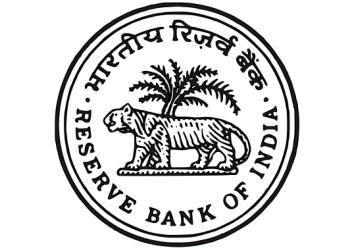 All peer-to-peer lending (P2P) platforms would be treated as non-banking financial companies (NBFCs) and will be regulated by the Reserve Bank of India (RBI), according to a government of India notification released on 20th Sept 2017.
The notification is a precursor to the much-delayed final guidelines that the RBI, the banking regulator, will soon be released for regulation of P2P lending in India.
As per RBI, P2P lending is a form of crowd-funding used to raise loans which are paid back with interest.
It can be defined as the use of an online platform that matches lenders with borrowers in order to provide unsecured loans.
The borrower can either be an individual or a legal person requiring a loan.
If you want to invest money in it, you go to a P2P marketplace and register as a lender.
Interest rates or fees are paid to the platform by both the lender as well as the borrower. Borrowers pay an origination fee–either a flat rate fee or as a percentage of the loan amount raised–according to their risk category.
Background All peer-to-peer lending (P2P) platforms would be treated as non-banking financial companies (NBFCs) and will be regulated by the Reserve Bank of India (RBI), according to a government of India notification released on 20th Sept 2017.
The notification is a precursor to the much-delayed final guidelines that the RBI, the banking regulator, will soon be released for regulation of P2P lending in India.
As per RBI, P2P lending is a form of crowd-funding used to raise loans which are paid back with interest.
It can be defined as the use of an online platform that matches lenders with borrowers in order to provide unsecured loans.
The borrower can either be an individual or a legal person requiring a loan.
If you want to invest money in it, you go to a P2P marketplace and register as a lender.
Interest rates or fees are paid to the platform by both the lender as well as the borrower. Borrowers pay an origination fee–either a flat rate fee or as a percentage of the loan amount raised–according to their risk category.
Background
- The RBI had floated a consultation paper in April 2016.
- The proposed regulatory framework would encompass the permitted activity, regulations on capital, governance, business continuity plan and customer interface, apart from regulatory reporting.
- P2P lending is one such business model that has gathered momentum globally and is taking root in India.
- Although nascent in India and not significant in value yet, potential benefits that P2P lending promises to various stakeholders (to borrowers, lenders, agencies etc) and its associated risks to the financial system are too important to be ignored.
- The regulator had argued in favour of regulating the P2P lending entities in the consultation paper, stating that the sector has the potential to “disrupt the financial sector and throw surprises”.
- The paper further stated that the importance of an alternative lending channel which the P2P platforms are offering also needs to be acknowledged.
- P2P lending promotes alternative forms of finance, where formal finance is unable to reach and also has the potential to soften the lending rates as a result of lower operational costs and enhanced competition with the traditional lending channels.
- If properly regulated, the P2P lending platforms can do this more effectively.
- This RBI regulation will bring much-needed legal clarity in the system, and lenders/platform will get legal rights to take adequate steps against defaulters.
- Also, regulation will mean wide acceptability of this concept among lenders as well as borrowers.
- This will fulfil RBI’s expectation of taking P2P lending to the masses of this country.
|
▼ REITs, InVITs to issue debt securities: SEBI [09-20-17]
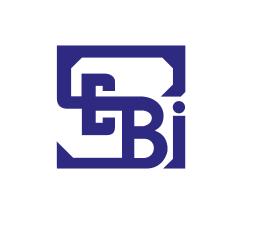 Capital market regulator Securities and Exchange Board of India (Sebi) on 18th Sept 2017 allowed infrastructure investment trusts (InvITs) and real estate investment trusts (REITs) raise capital by issuing debt securities.
The Sebi board, at its meeting on 18th Sept 2017, also made several other relaxations to the InvIT and REIT framework to give a boost to the stalled infrastructure projects in the country.
InvITs and REITs are investment vehicles that allow investors take exposure to an income-generating infrastructure project or real estate property.
Prior to this development, the framework only allowed launch of equity-oriented REITs and InVITs, which offer only indicative yields, not fixed yields.
Issue of debt-oriented REITs and InVITs will offer a fixed-return to investors, which could give a fillip to these instruments, said bankers.
Further, Sebi has extended the concept of 'strategic investor' for REIT. Currently, it was only allowed for InVITs, which has seen two issues in the domestic market.
It also allowed single-asset REIT on the lines of InVIT.
It also allowed a REIT to lend to the underlying holding company (Hodco) or special purpose vehicle (SPV).
Sebi had notified the regulations for REITs and InvITs in 2014. However, fund raising through these instruments has failed to take off.
So far, only two InvITs - IRB InvIT Fund and Indiagrid Trust - have been listed on the stock exchanges. While several realty players have shown interest in launching a REIT, there hasn't been a single issuance under this route.
SEBI Proposals for REIT, InVIT: Know More Capital market regulator Securities and Exchange Board of India (Sebi) on 18th Sept 2017 allowed infrastructure investment trusts (InvITs) and real estate investment trusts (REITs) raise capital by issuing debt securities.
The Sebi board, at its meeting on 18th Sept 2017, also made several other relaxations to the InvIT and REIT framework to give a boost to the stalled infrastructure projects in the country.
InvITs and REITs are investment vehicles that allow investors take exposure to an income-generating infrastructure project or real estate property.
Prior to this development, the framework only allowed launch of equity-oriented REITs and InVITs, which offer only indicative yields, not fixed yields.
Issue of debt-oriented REITs and InVITs will offer a fixed-return to investors, which could give a fillip to these instruments, said bankers.
Further, Sebi has extended the concept of 'strategic investor' for REIT. Currently, it was only allowed for InVITs, which has seen two issues in the domestic market.
It also allowed single-asset REIT on the lines of InVIT.
It also allowed a REIT to lend to the underlying holding company (Hodco) or special purpose vehicle (SPV).
Sebi had notified the regulations for REITs and InvITs in 2014. However, fund raising through these instruments has failed to take off.
So far, only two InvITs - IRB InvIT Fund and Indiagrid Trust - have been listed on the stock exchanges. While several realty players have shown interest in launching a REIT, there hasn't been a single issuance under this route.
SEBI Proposals for REIT, InVIT: Know More
- The regulator has also proposed to amend definition of valuer for both the trusts. Currently, the valuer should not be an investor in InvITs or the assets being valued.
- The valuer should have minimum experience five years in undertaking valuation of the infrastructure assets.
- The changes approved by Sebi is yet another attempt to push the REIT and InvIT regime, which till date has practically been a non-starter despite the regime being notified several years back (with an exception of just a few such vehicles being set-up).
- Allowing such vehicles to raise debt capital by way of issuance of bonds is unique for a Sebi fund regulatory vehicle as its not permitted for other Sebi regulated fund vehicles like alternative investment funds (AIFs) and mutual funds.
- This brings the investment trust regime more at par with the RBI's NBFC regime which typically raises private capital by issuance of NCDs
- Besides, the market regulator has apprised the board on the action taken against the 331 suspected shell companies which were barred to trade since August 7.
- So far, the regulator has asked for a forensic audit of about 12 firms. While stock exchanges are looking into the credentials of about 90 firms, in some cases, the Securities Appellate Tribunal (SAT) had put a stay order on the trading ban.
- Sebi has learnt to have also reviewed the cases that are pending before various courts and appellate tribunals.
- In a first, Sebi has also appointed a chief economic adviser who may assist the regulator on various policy issues.
|
▼ India ranks lowest on Global Human Capital Index among BRICS nations [09-15-17]
India has been placed at a low 103 rank, the lowest among BRICS economies, on the World Economic Forum's (WEF's) Global Human Capital Index, which has been topped by Norway.
India also ranks "among the lowest in the world" when it comes to the employment gender gap, but has fared well when it comes to development of skills needed for the future with a rank of 65 out of total 130 countries surveyed.
The list compiled by Geneva-based World Economic Forum (WEF) takes into account "the knowledge and skills people possess that enable them to create value in the global economic system" to measure the 'human capital' rank of a country.
India was ranked 105th on this list last year, while Finland was on the top which has pushed by Norway to second place this year.
The WEF said India is ranked lower than its BRICS peers, with Russian Federation placed as high as 16th place, followed by China at 34th, Brazil at 77th and South Africa at 87th place.
Among the South Asian countries also, India was ranked lower than Sri Lanka and Nepal, although higher than neighbouring Bangladesh and Pakistan.
Low Ranking by India: Know More - India is held back by a number of factors, including low educational attainment (primary education attainment among 25 -54 year olds is 110th for example) and low deployment of its human capital, meaning the skills available are not getting put to good use.
- WEF said India ranks 118 for labour force participation among the key 35-54 year old demographic, suggesting far too many Indians are engaged in informal or subsistent employment.
- However there is a modern India rising. When it comes to development of skills needed for the future, the country fares strongly, ranking 65 out of 130.
- The country also performed well in the know-how parameter that measures the use of specialised skills at work
- The overall list was topped by Norway, followed by Finland and Switzerland in the second and third place respectively.
- Other countries in the top 10 include, the United States (4th), Denmark (5th), Germany (6th), New Zealand (7th), Sweden (8th), Slovenia (9th) and Austria (10th).
- The report measures 130 countries against four key areas of human capital development; Capacity (determined by past investment in formal education), Deployment (accumulation of skills through work), Development (continued upskilling and reskilling of existing workers) and Know-how (specialised skills-use at work).
- According to the report, 62 per cent of human capital has now been developed globally.
|
▼ Pledge to double farmer incomes by 2022 [09-14-17]
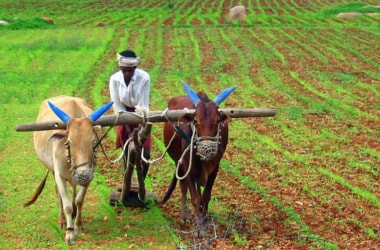 In order to improve the economic condition of the farmers, Prime Minister, Shri Narendra Modi has set up an ambitious target in front of the nation.
The goal is to double the income of the farmers by 2022. It has been for the first time, a Prime Minister has put such a target in front of the compatriots for the welfare of the farmers.
Under the able guidance of Prime Minister, Shri Narendra Modi, the Agriculture and Farmers Welfare Ministry has to achieve this target by 2022.
The Ministry is committed to making his dreams come true. Farmers and officers are implementing schemes to increase the income of the farmers.
Krishi Vigyan Kendras (KVKs) organised pledge taking ceremonies in 562 districts of the country between August 19 to September 11, 2017, as a clarion call to farmers to double their income by 2022 and a total of 47,08,47 farmers and agricultural workers participated in it. In order to improve the economic condition of the farmers, Prime Minister, Shri Narendra Modi has set up an ambitious target in front of the nation.
The goal is to double the income of the farmers by 2022. It has been for the first time, a Prime Minister has put such a target in front of the compatriots for the welfare of the farmers.
Under the able guidance of Prime Minister, Shri Narendra Modi, the Agriculture and Farmers Welfare Ministry has to achieve this target by 2022.
The Ministry is committed to making his dreams come true. Farmers and officers are implementing schemes to increase the income of the farmers.
Krishi Vigyan Kendras (KVKs) organised pledge taking ceremonies in 562 districts of the country between August 19 to September 11, 2017, as a clarion call to farmers to double their income by 2022 and a total of 47,08,47 farmers and agricultural workers participated in it.
- KVKs organised this program in the 562 districts of the country. The program saw the participation of the State Government and the Central Government officers, Agricultural Officers, Students and a large number of farmers in each district.
- 49 Central Ministers participated in pledge taking ceremonies at 79 locations (Districts).
- In 284 places (Districts), Members of Parliament attended the program.
- In 111 locations (Districts), State Ministers attended the program.
- In 350 locations (Districts), the MLAs attended the program.
- In 398 places (Districts), Chairman of District Panchayat attended the program.
|
▼ 4th Estimates reveal record food grain production [09-13-17]
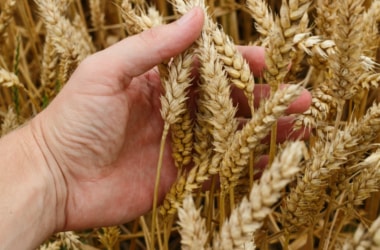 The fourth Estimates has revealed record food grain production at 275.68 million tonnes comprising of 110.15 mn tonnes paddy, 98.38 mn tonnes wheat, 22.95 mn tonnes pulses and 44.19 mn tonnes coarse cereal.
Activities of NFSM, which are as follows, were also covered: The fourth Estimates has revealed record food grain production at 275.68 million tonnes comprising of 110.15 mn tonnes paddy, 98.38 mn tonnes wheat, 22.95 mn tonnes pulses and 44.19 mn tonnes coarse cereal.
Activities of NFSM, which are as follows, were also covered:
- In 2016-17, 638 districts of 29 states grew pulses against 468 districts of 16 states in 2012-13.
- Coarse cereals were included in 12th scheme. NFSM-coarse cereal is being implemented in 265 districts of 28 states since 2014-15
The council took following decisions at the NFSM meeting:- Allocation of additional funds to target pulse cultivation in the rice fallow areas of Eastern States; and allocate additional funds for the pulses & oilseeds cultivation to tackle wheat blast disease in the West Bengal.
- Allocation of funds by the Indian Council of Agricultural Research (ICAR) institutes for Frontline Demonstration of rice, wheat, pulses and coarse cereals by various Krishi Vigyan Kendras.
- Distribution of seeds mini kits and assistance to the central agencies for the production of certified seeds of pulses.
- Experiment of TL seeds developed by the ICAR, under seed hub program during 2016-17 and their implementation during Frontline Demonstration in 2017-18.
- Under NFSM pulse program, promotion of beekeeping with arhar dal during Frontline Demonstration.
- Approval for extension of all the projects approved under NFSM till 2016-17.
- Additional fund allocation for production of breeder seeds of pulses and creation of seed hubs.
- Funds approved for the year 2015-16 agricultural awards.
- Presentations by states like Andhra Pradesh, Maharashtra, Odisha and Uttar Pradesh.
Increased expenditure has led to increase in production of the food grains.
|
▼ ECB mulls QE program [09-13-17]
Plans by the government to backtrack on the controversial Ogden rate changes, which have slashed the earnings of UK insurers, lifted heavily-exposed Direct Line on the FTSE 100.
The government said yesterday that if the rate, which concerns personal injury claims, were set today it would “fall within the range of 0pc to 1pc”.
This means smaller compensation claims for insurers to pay and higher earnings.
Insurers’ shares tumbled when the Government announced in February that the Ogden rate would drop to -0.75pc from 2.5pc with the fall forcing Direct Line to report significantly smaller profits and halve its dividend.
A broad-based rebound helped the wider FTSE 100 finish in positive territory for the first time this week, closing 42.85 points higher at 7396.98.
On the currency markets the pound’s stumble towards parity with the euro took further impetus after European Central Bank president Mario Draghi revealed that the Governing Council will make the “bulk” of its decisions on tapering its €60bn-a-month quantitative easing programme in October.
Despite Mr Draghi calling the euro's recent volatility and strength a "source of uncertainty", the currency pushed past $1.20 against the dollar.
The pound, meanwhile, retreated to back below €1.09, as it took another knock on its drift towards parity with the euro.
Elsewhere, the FTSE 100 snapped its losing streak and rose higher for the first time this week.
|
▼ Project Insight: Big Data analytics to catch tax evaders! [09-12-17]
 The Income Tax department is planning to implement the first phase of ‘Project Insight’ from May 2017 to monitor high value transactions, with a view to curbing the circulation of black money.
This project has been initiated for data mining, collection, collation and processing of such information for effective risk management with a view to widening and deepening tax base.
Project Insight will use big data analytics to match information from social media sites to deduce mismatches between spending pattern and income declaration.
The tax department will analyse mismatches in income declarations and spending patterns to trace tax evasions and black money, an official said.
The government has also made linking of PAN with Aadhaar mandatory to get a 360 degree view of a person’s income and assets.
The tax department had last year signed a pact with L&T Infotech for implementation of Project Insight, which is designed to strengthen the non-intrusive information driven approach for improving tax compliance.
This is part of the steps the government has taken to unearth and tax undeclared or illegal wealth.
The steps include launch of ‘Operation Clean Money’ after demonetisation of old higher denomination currency for collection, collation and analysis of information on cash transactions, extensive use of information technology and data analytics tools for identification of high risk cases, expeditious e-verification of suspect cases and enforcement actions.
The information technology-based Project Insight will strengthen the information driven approach for improving tax compliance.
The project will use technology to allow the government collate databases of IT returns, IT forms, TDS/TCS statements and Statement of Financial Transactions received from financial institutions. As part of Project Insight, a new Compliance Management Centralised Processing Centre (CMCPC) would also be set up for handling preliminary verification, campaign management, generation of bulk letters/notices and follow-up.
Key Issues The Income Tax department is planning to implement the first phase of ‘Project Insight’ from May 2017 to monitor high value transactions, with a view to curbing the circulation of black money.
This project has been initiated for data mining, collection, collation and processing of such information for effective risk management with a view to widening and deepening tax base.
Project Insight will use big data analytics to match information from social media sites to deduce mismatches between spending pattern and income declaration.
The tax department will analyse mismatches in income declarations and spending patterns to trace tax evasions and black money, an official said.
The government has also made linking of PAN with Aadhaar mandatory to get a 360 degree view of a person’s income and assets.
The tax department had last year signed a pact with L&T Infotech for implementation of Project Insight, which is designed to strengthen the non-intrusive information driven approach for improving tax compliance.
This is part of the steps the government has taken to unearth and tax undeclared or illegal wealth.
The steps include launch of ‘Operation Clean Money’ after demonetisation of old higher denomination currency for collection, collation and analysis of information on cash transactions, extensive use of information technology and data analytics tools for identification of high risk cases, expeditious e-verification of suspect cases and enforcement actions.
The information technology-based Project Insight will strengthen the information driven approach for improving tax compliance.
The project will use technology to allow the government collate databases of IT returns, IT forms, TDS/TCS statements and Statement of Financial Transactions received from financial institutions. As part of Project Insight, a new Compliance Management Centralised Processing Centre (CMCPC) would also be set up for handling preliminary verification, campaign management, generation of bulk letters/notices and follow-up.
Key Issues
- ‘Project Insight’ is an integrated platform that will utilize vast amount of information easily available on social media to conduct raids online rather than traditional way of conducting random searches, known as tax raids.
- It will use data mining, big data and analytics to scoop out tax evaders from social media platforms like Facebook, Twitter and Instagram.
- The Permanent Account Number (PAN) will be the unique identifier is used by the Income Tax department to link and analyse various transactions relating to the tax payers.
- This will enhance the department’s ability to monitor the flow of funds and will provide an audit trail of high value transactions and curb circulation of black money
- The ‘Project Insight’ will be implemented in phased manner during the period 2016-2018. For its implementation, the IT department has signed a contract with L&T Infotech Ltd.
- It will also be leveraged for implementation of Foreign Account Tax Compliance Act Inter Governmental Agreement (FATCA IGA) and Common Reporting Standard (CRS).
Significance of ‘Project Insight’- It will help in catching tax evaders in a non-intrusive manner using technology and without traditional intrusive methods like search and seizure.
- The integrated platform will play a key role in widening of tax base and data mining to track tax evaders.
- The reporting compliance management system of project will ensure that third party reporting by entities like banks and other financial institutions is timely and accurate.
- It will also set up a streamlined data exchange mechanism for other government departments.
|
▼ National Nutrition Strategy Launched [09-6-17]
 Leader of the Green Revolution Dr. M.S Swaminathan and Padma Shri Dr. H Sudarshan, on Sept 5 2017, launched the National Nutrition Strategy, along with Vice Chairman Dr. Rajiv Kumar and Member Dr. Vinod Paul.
With a benefit to cost ratio of 16:1 for 40 low and middle-income countries, there is a well recognized rationale, globally, for investing in Nutrition.
The recently published NFHS-4 results reflect some progress, with a decline in the overall levels of under nutrition in both women and children.
However, the pace of decline is far below what numerous countries with similar growth trajectories to India have achieved.
Moreover, India pays an income penalty of 9% to 10% due to a workforce that was stunted during their childhood.
To address this and to bring nutrition to the centre-stage of the National DevelopmentAgenda, NITI Aayog has drafted the National Nutrition Strategy.
Formulated through an extensive consultative process, the Strategy lays down a roadmap for effective action, among both implementers and practitioners, in achieving our nutrition objectives.
The nutrition strategy envisages a framework wherein the four proximate determinants of nutrition - uptake of health services, food, drinking water & sanitation and income & livelihoods - work together to accelerate decline of under nutrition in India.
National Nutrition Strategy: Know More Leader of the Green Revolution Dr. M.S Swaminathan and Padma Shri Dr. H Sudarshan, on Sept 5 2017, launched the National Nutrition Strategy, along with Vice Chairman Dr. Rajiv Kumar and Member Dr. Vinod Paul.
With a benefit to cost ratio of 16:1 for 40 low and middle-income countries, there is a well recognized rationale, globally, for investing in Nutrition.
The recently published NFHS-4 results reflect some progress, with a decline in the overall levels of under nutrition in both women and children.
However, the pace of decline is far below what numerous countries with similar growth trajectories to India have achieved.
Moreover, India pays an income penalty of 9% to 10% due to a workforce that was stunted during their childhood.
To address this and to bring nutrition to the centre-stage of the National DevelopmentAgenda, NITI Aayog has drafted the National Nutrition Strategy.
Formulated through an extensive consultative process, the Strategy lays down a roadmap for effective action, among both implementers and practitioners, in achieving our nutrition objectives.
The nutrition strategy envisages a framework wherein the four proximate determinants of nutrition - uptake of health services, food, drinking water & sanitation and income & livelihoods - work together to accelerate decline of under nutrition in India.
National Nutrition Strategy: Know More
- The Nutrition Strategy framework envisages a Kuposhan Mukt Bharat - linked to Swachh Bharat and Swasth Bharat.
- The aim is to ensure that States create customized State/ District Action Plans to address local needs and challenges.
- This is especially relevant in view of enhanced resources available with the States, to prioritise focussed interventions with a greater role for panchayats and urban local bodies.
- The strategy enables states to make strategic choices, through decentralized planning and local innovation, with accountability for nutrition outcomes.
|
▼ Quarterly Public Debt Management report Apr-June 2017 released [09-4-17]
 Since April-June (Q1) 2010-11, Public Debt Management Office (PDMC) (earlier Middle Office), Budget Division, Department of Economic Affairs, Ministry of Finance, is bringing-out a Quarterly Report on Public Debt Management on regular basis. Since April-June (Q1) 2010-11, Public Debt Management Office (PDMC) (earlier Middle Office), Budget Division, Department of Economic Affairs, Ministry of Finance, is bringing-out a Quarterly Report on Public Debt Management on regular basis.
The Current Quarterly Report pertains to the quarter April-June 2017 (Q 1 FY 18).
The liquidity in the economy remained in surplus, after the demonetization, during the quarter, which kept the yield environment low.
However, the cash position of the Government of India (GoI) was somewhat stressed during the quarter, due to mismatch in receipt and payment which is generally seen during the first half of the financial year.
The weighted average maturity (WAM) and weighted average yield (WAY) of the G-Sec issuance made during Q1 FY18 was 14.92 years and 7.01 per cent respectively.
During Q1 FY18, Government issued dated securities worth Rs.1,68,000 crore (29.0 per cent of BE), higher than Rs. 1,65,000 crore (28.4 per cent of BE) in Q1 of FY 17.
Auctions of both, Government dated securities and Treasury Bills during Q1 of FY18 were held smoothly.
The Public Debt (excluding liabilities under the ‘Public Account’) of the Central Government provisionally increased by 3.6 per cent (provisional) in Q1 of FY 18 on Q-o-Q basis.
Internal debt constituted 93.0 per cent of Public Debt as at end-June 2017 while marketable securities accounted for 83.2 per cent of Public Debt.
About 26.6 per cent of outstanding stock has a residual maturity of up to 5 years at end - June 2017 or 5.3 per cent of outstanding stock will mature every year over the next five years, which implies that rollover risk in the debt portfolio continues to be low.
|